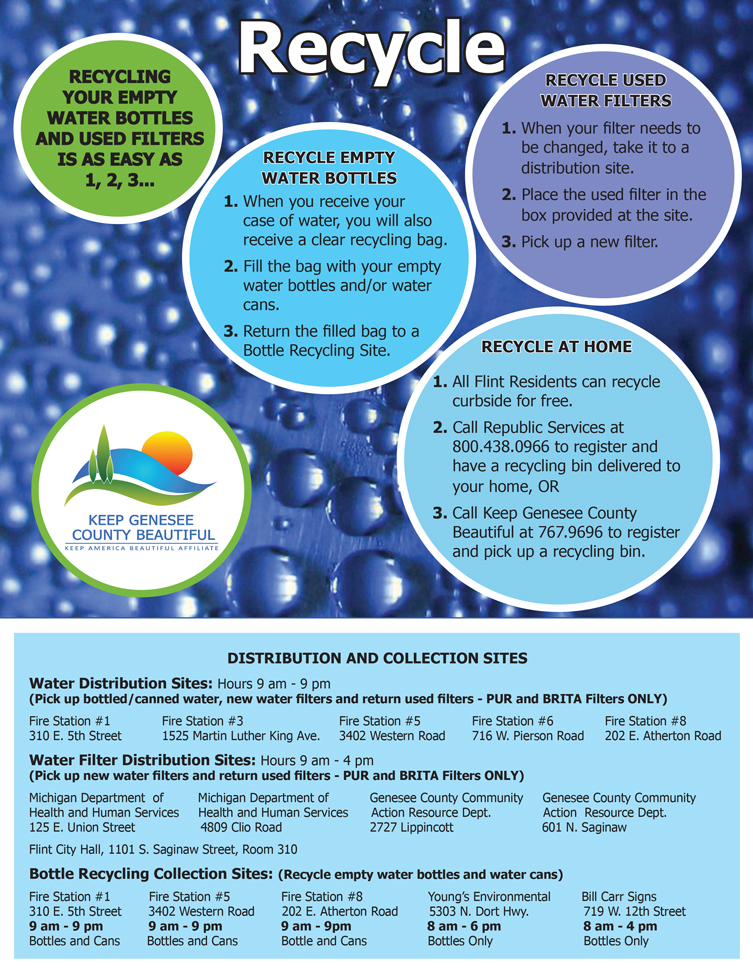The main item for the meeting was review of the Capital Improvement Plan (CIP), which had been updated based on feedback received in the last two weeks. Additional discussion centered on how the CIP connects to the current water crisis in terms of infrastructure needs that have been exacerbated by damage to the pipes by corrosive water. Some items to note with that:
- A contractor, PSI, has been hired to audit 400 miles of the 600 miles of underground pipes in the city in order to estimate the costs of repairing/replacing affected pipes. The report is expected in February. Right now, the CIP has a placeholder for the project that will be updated as more reliable estimates are available.
- A project placeholder is also being created for the cost of repairing in-home lead-affected plumbing (even though the property is not owned by the City). This is part of the effort to document the level of infrastructure damage related to the water.
- There is a challenge of not having a “baseline” of the status of pipes before the corrosive water was added to the situation. Estimates of the damage at this point have ranged from adding 10-20 years of wear to a system that was already 75 years old. Staff indicated that the City intends to present the total costs to the State, including all pipe costs as well as other costs such as staff time that had to be diverted to deal with this situation.
- You may have heard reference to thousands of note cards on which there was supposedly information about what homes have lead service lines. In reality, it seems these cards are functionally useless—information is illegible or incomplete. Therefore, other means are required to determine where the lead service lines are that will need to be replaced. The City is using some historical maps to get some information about where utility work occurred…but residents have an important and time-sensitive role to play. If you have not yet had your unfiltered water tested for lead, please do so immediately. The collective results of the lead tests will be used to figure out which areas have lead service lines, but this needs to be done now. The lead levels in the water should be decreasing, so the window is closing for collecting this information. You can pick up a free test kit at any of the fire stations or City Hall.
- One of Governor Snyder’s emails that was released about water in Flint estimated the lead service line replacement costs at $60 million (and 15 years). Commissioners were agreed that 15 years is way too long—people need to know there is a light at the end of the tunnel. Staff indicated that the $60 million figure was based on a lowball assumption that the cost was $1,500 per home. In reality, even cities that have tried to reduce the price by pairing lead service line replacement with other street/utility repairs (like Lansing) found the per home cost was at least 2-3 times more. A more typical replacement cost is $4,000-$6,000. The actual cost of replacing lead service lines could therefore be more likely to be in the range of $200-240 million.
- Commissioners were interested in the idea that if large-scale work was going to occur to fix pipes and service lines, it should be coupled with other infrastructure investments to save on costs and maximize benefits. This might include things such as fixing roads, upgrading streetlights to LED, and laying fiber optic cable at the same time.
- In trying to coordinate all this work with infrastructure assessment and repair/replacement, having a Director of the Department of Public Works in place is essential. The position is currently vacant and the city is actively recruiting candidates in a national search to get it filled.
The CIP was approved 5-0 with the contingencies that a project be added for the costs of replacing lead plumbing in homes and that all of the projects related to the water crisis be flagged to facilitate easy recognition by the public as well as to aid the City in compiling a “bill” of costs to charge to the State. (We had a low turnout due to several commissioners being ill, but they provided their comments via email.) The CIP will now go before City Council. According to state law, the CIP must be adopted annually and it is intended to guide the budgeting process.
The other item on the agenda was the revised draft of the zoning code. Commissioners received a big binder with the updated draft and we identified a plan for how to start tackling the content. We will try to take chunks of the draft code at each of our meetings in February and March and will schedule additional meetings if needed. For our next meeting on February 9, we will plan to discuss articles 1-7. The updated draft is available on the website, www.imagineflint.com.
Some additional information…
As many of us are using bottled water, recycling has come up as a more important need than ever. Keep Genesee County Beautiful developed the attached flyer, which provides information about options. While you can take your empty water bottles back to distribution sites, it makes sense to me to encourage people to sign up for curbside recycling. (We’re paying for it, why not use it?) You can get help doing so through Keep Genesee County Beautiful (www.kgcb.net) or by calling Republic Services directly. Details are on the flyer.
Thanks,
Elizabeth





